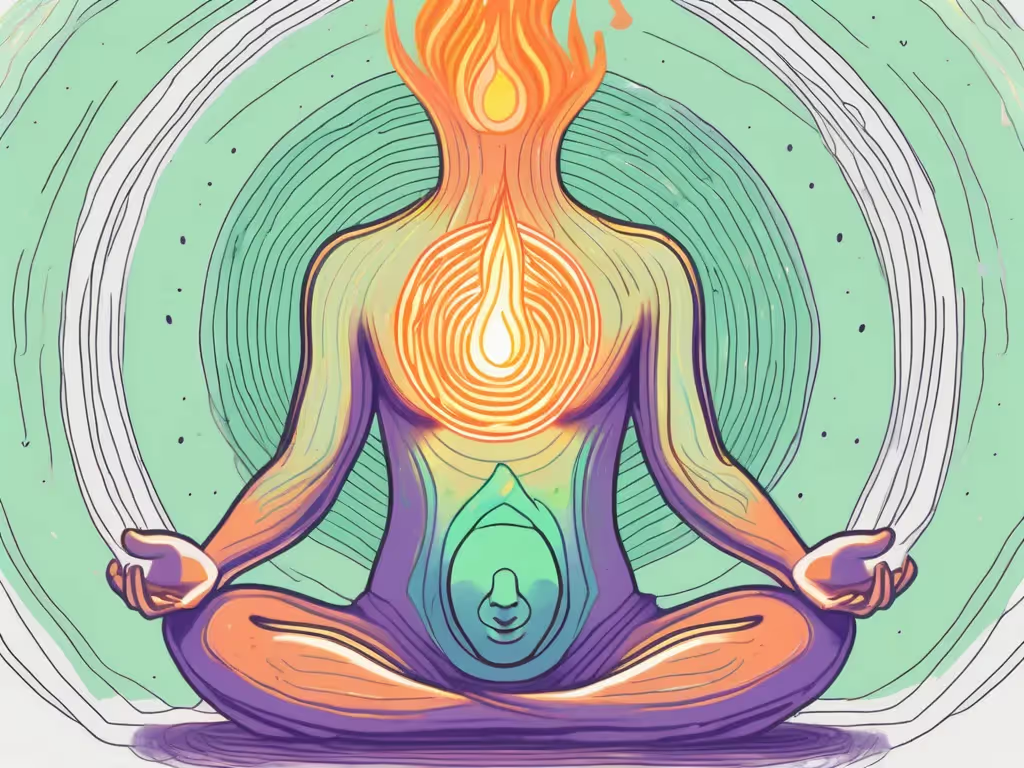If you're someone who has experienced the transformative power of meditation, you may have wondered how you could create your own meditation music. The process may seem daunting, but with the right guidance and mindset, you can embark on a journey of self-expression and mindfulness through music. In this step-by-step guide, we will explore the importance of meditation music, the essential elements that make it special, and provide practical tips on creating your own unique compositions. So grab your headphones, find a peaceful space, and let's dive into the world of meditation music.
Understanding the Importance of Meditation Music
When we think of meditation, we often envision a serene environment and a quiet mind. However, music can play a vital role in enhancing the meditation experience. It acts as a powerful tool to help calm the mind, induce deep relaxation, and create a harmonious atmosphere. By incorporating carefully crafted music into your meditation practice, you can elevate your spiritual journey and unlock new levels of tranquility.
Aura has the world’s largest and best collection of Meditations and hundreds of Coaches to choose from.
Try it Free!
The Role of Music in Meditation
Music has been used for centuries as a means of connecting with higher states of consciousness. It has the ability to touch our souls, evoke emotions, and transport us to a place of transcendence. In the context of meditation, music acts as a guide, soothing our minds and helping us find inner peace. It serves as a bridge between the conscious and unconscious mind, opening up a pathway for self-awareness and self-discovery.
The Benefits of Custom Meditation Music
While pre-recorded meditation music can be helpful, there is something truly special about creating your own customized compositions. When you immerse yourself in this creative process, you infuse your intentions, emotions, and personal energy into the music. This personalized touch enhances the resonance of the music and allows you to tailor it to your specific meditative needs. Additionally, by crafting your own compositions, you can experiment with different tones, rhythms, and melodies that resonate deeply with your soul.
Essential Elements of Meditation Music
Creating effective meditation music requires a careful blend of various elements. Let's explore these essential components that form the foundation of any remarkable meditation composition.
Understanding Rhythm and Tempo
Rhythm and tempo are the heartbeat of meditation music. The rhythm sets the pace and creates a sense of flow, while the tempo determines the speed at which the music unfolds. This interplay between rhythm and tempo has a profound impact on the listener, helping to induce a state of relaxation and harmony.
The Role of Melody and Harmony
Just as the beauty of nature lies in its harmonious balance, the same applies to meditation music. Melody provides the emotional essence of the music, while harmony adds depth and richness. Together, they create a unified and melodious experience that resonates with the listener's innermost being.
The Importance of Instrumentation
The choice of instruments can greatly influence the mood and energy of meditation music. Whether it's the soothing tones of a flute, the gentle strum of a guitar, or the ethereal sounds of a crystal singing bowl, each instrument carries its own unique vibrations that can elevate the meditation experience. Experiment with different instruments and find the ones that resonate with your soul.
Step-by-Step Guide to Creating Meditation Music
Now that we have explored the importance of meditation music and its essential elements, let's delve into the step-by-step process of creating your own meditation compositions.
Step 1: Setting Your Intention
Before you begin creating your music, take a moment to set your intention. This is an opportunity to clarify your purpose and the emotions you wish to evoke through your composition. It could be a desire for inner peace, healing, or simply to create a tranquil atmosphere. Allow this intention to guide your creative process.
Step 2: Choosing Your Instruments
With your intention in mind, carefully select the instruments that align with the mood and energy you wish to create. Consider the tone, timbre, and resonance of each instrument and how they blend together harmoniously. Remember, there are no right or wrong choices here – it's about what resonates with you.
Step 3: Composing the Melody
Begin by crafting a melody that embodies your intention. Let your intuition guide you as you explore different notes, intervals, and sequences. Pay attention to the emotional response evoked by each melody and trust your creative instincts. Remember, your melody should be soothing, yet compelling enough to keep the listener engaged.
Step 4: Adding Harmony and Rhythm
Once you have your melody, it's time to layer in harmony and rhythm. Experiment with different chord progressions, harmonies, and rhythmic patterns that complement the melody. Strike a delicate balance between simplicity and complexity, allowing the music to breathe and evolve naturally.
Step 5: Recording and Mixing Your Music
Now that your composition is complete, it's time to bring it to life through recording and mixing. Use professional recording equipment or software to capture the essence of your music. Pay attention to the balance of the instruments, the levels of the different elements, and the overall sonic quality. If you're new to recording, don't be discouraged by the learning curve – embrace it as an opportunity for growth.
Tips for Enhancing Your Meditation Music
As you embark on your journey to create meditation music, here are some additional tips to enhance your compositions:
Using Nature Sounds
Incorporating the sounds of nature, such as flowing water, chirping birds, or gentle rainfall, can enhance the sense of tranquility and create a more immersive meditation experience. Experiment with different nature sounds and find the ones that resonate with your spiritual connection to the Earth.
Incorporating Binaural Beats
Binaural beats are a powerful tool to help induce a meditative state. They consist of two slightly different frequencies played simultaneously, which can entrain the brainwaves to specific states of consciousness. By incorporating binaural beats into your music, you can deepen the meditative experience and promote relaxation.
Experimenting with Different Musical Scales
Explore different musical scales, such as the pentatonic scale or the Indian raga scales, to add cultural and emotional depth to your compositions. Each scale carries its own unique flavor and can evoke specific moods and atmospheres. Allow yourself to step beyond familiar scales and embrace the diversity of world music.
Now that you have gained insights into the art of creating meditation music, you can begin your own creative exploration. Remember, the key is to approach this process with an open mind and heart. Allow the music to flow through you, and let it become a vessel for self-expression and spiritual growth.
On the other hand, if you're looking for a more convenient way to enhance your meditation practice, the Aura Health app can be a valuable tool. With its vast library of meditation music, including guided meditations and soothing sounds, the app can help you create a serene environment wherever you are. Additionally, Aura Health offers personalized recommendations based on your preferences and meditation goals, ensuring you have access to tailored music that resonates deeply with you. So why not explore the possibilities and take your meditation practice to new heights with the Aura Health app?
Aura is Your All In One App for Meditation, Mindfulness Wellbeing
Find peace every day with one app for your whole well-being. There is no one-size-fits-all solution to mental well-being. Aura is the first all-in-one wellness app that learns how to best help you. Discover an endless library of expert-created tracks for your well-being, all taught by the world’s best coaches, therapists, and storytellers. With Aura's personalized recommendations, you can find peace every morning, day and night.



.webp)






.avif)

%20(1).avif)


.avif)
.avif)
.webp)


.avif)


















































































































.avif)

















.svg)








